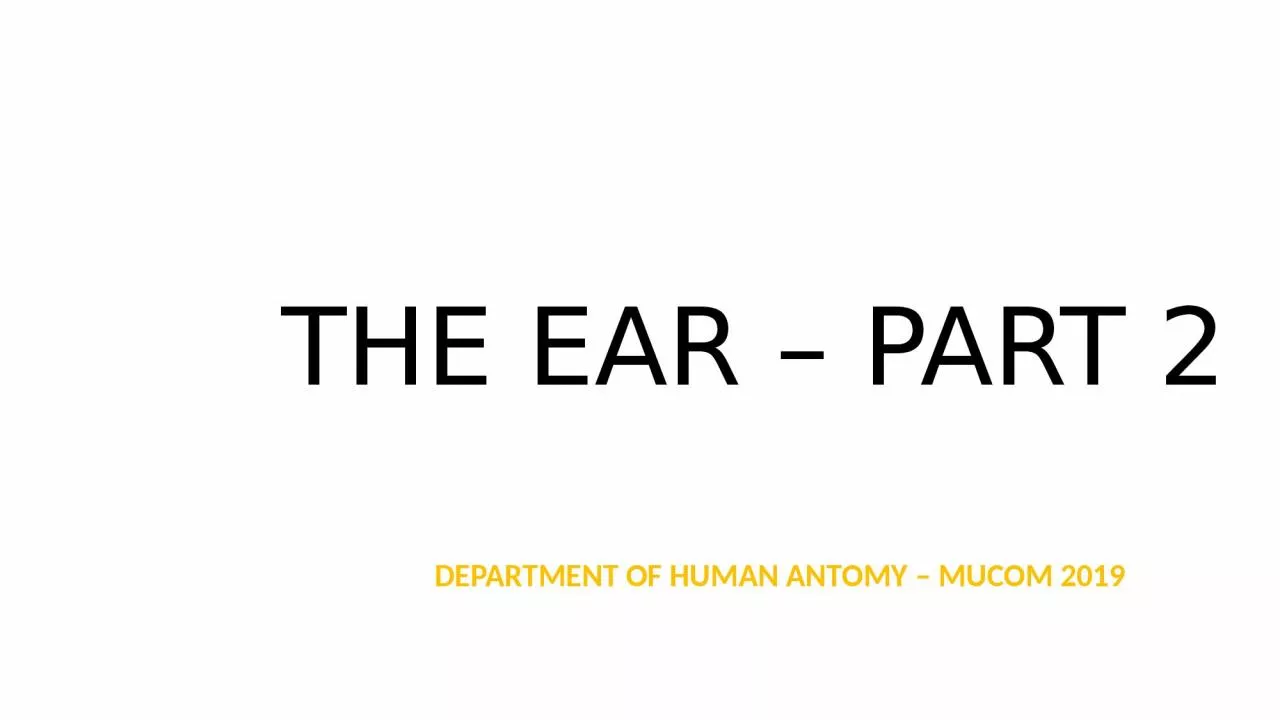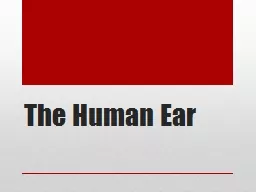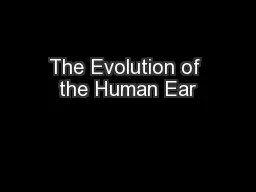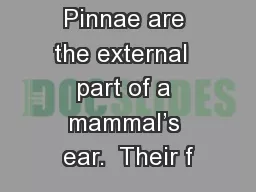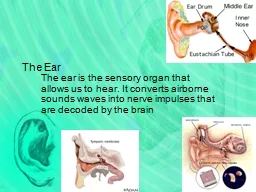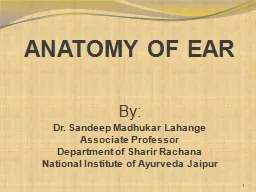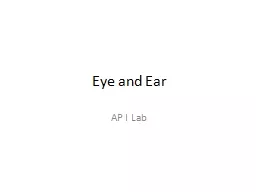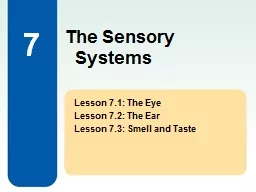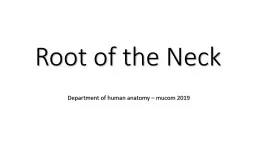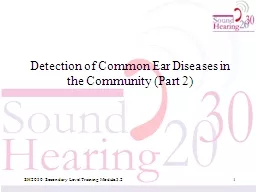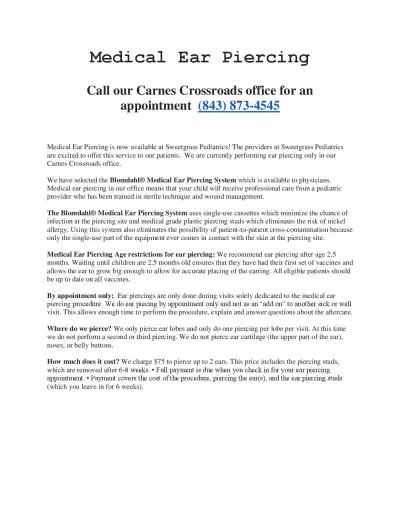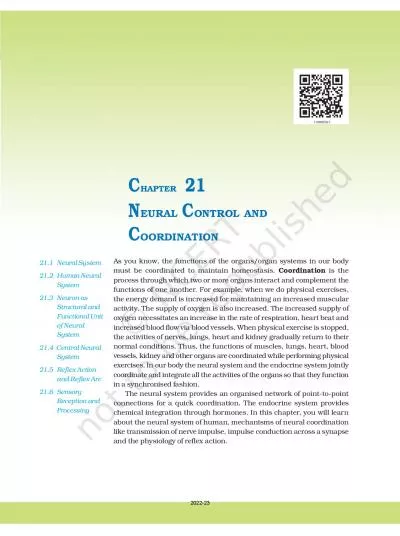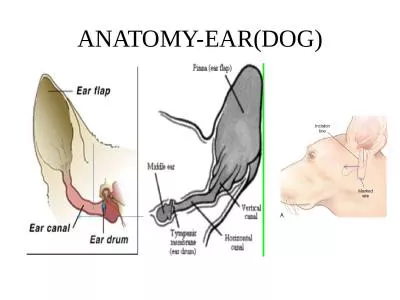PPT-THE EAR – PART 2 DEPARTMENT OF HUMAN ANTOMY – MUCOM 2019
Author : joanne | Published Date : 2023-05-23
Objectives Know the anatomical features of the internal ear and its function Learn the differences between bony and membranous labyrinth Learn the anatomical features
Presentation Embed Code
Download Presentation
Download Presentation The PPT/PDF document "THE EAR – PART 2 DEPARTMENT OF HUMAN A..." is the property of its rightful owner. Permission is granted to download and print the materials on this website for personal, non-commercial use only, and to display it on your personal computer provided you do not modify the materials and that you retain all copyright notices contained in the materials. By downloading content from our website, you accept the terms of this agreement.
THE EAR – PART 2 DEPARTMENT OF HUMAN ANTOMY – MUCOM 2019: Transcript
Download Rules Of Document
"THE EAR – PART 2 DEPARTMENT OF HUMAN ANTOMY – MUCOM 2019"The content belongs to its owner. You may download and print it for personal use, without modification, and keep all copyright notices. By downloading, you agree to these terms.
Related Documents

